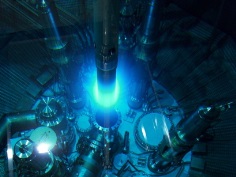
Ralph Gilles
Technical University of Munich, Germany
Title: How neutrons as a probe for in situ and in operando measurements support the understanding of electrochemistry in Li-ion battery research
Biography
Biography: Ralph Gilles
Abstract
For a better understanding of the electrochemistry in batteries a huge demand emerge for in situ and in operando characterization methods. Due to the high penetration depth and high sensitivity of neutrons to light elements as lithium such a probe is more and more attractive in the last decade. This contribution gives an overview how neutrons with their unique properties contribute in the development of new battery cells. During charging and discharging of NMC/graphite cells the intercalation of Li in the graphite layers can be observed in situ with neutron diffraction (ND) as such measurements are sensitive to detect LiCx phases as LiC6 and LiC12 during the intercalation/de-intercalation process. Under fast charging conditions and low temperatures the appearance of Li plating can be studied. A correlation of C-rates and Li plating is investigated by means of voltage relaxation and in situ ND. Batteries consisting of lithium iron phosphate (LFP) are often used for stationary energy storage systems. Here neutrons provide the answer why various types of graphite result in losses of the storage capacity. On larger scales of >50 micrometer neutron imaging (radiography and tomography) enables a non-destructive view inside the cell to make visible for example how the electrolyte filling with the distribution of the electrolyte in the cell between the layer stacks in a pouch cell takes place. The use of neutron induced prompt gamma activation analysis (PGAA) is a powerful tool to describe the capacity loss of the cell caused by tiny metal deposition on the graphite anode after charging/discharging processes. The method of neutron depth profiling (NDP) is suited to study near surface phenomena as the Li distribution in electrodes. A new set-up for NDP is currently under development to improve the space resolution and to measure with a time resolved mode.

